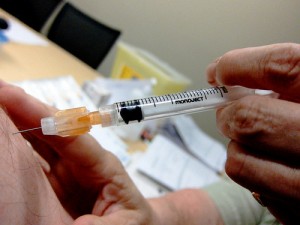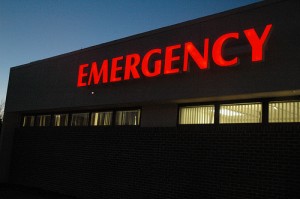Whistle-blowing is both a morally important choice and one that is frequently very difficult. This article on Nurse.com explains that it can be a long and difficult process, that can chip away at a whistle-blowers’ sense of self-worth. They may be shunned by peers or lose their job. It’s not uncommon for people who have been through the whole process to say that if it happened again they’d just look away.
This despite the fact that studies have shown that whistle-blowing is the most important resource for detecting and reporting corporate fraud.
The ANA defines whistle-blowing as is the act of going outside a place of employment to report serious problems, such as those that endanger patients.
Nurses have a responsibility to report these kinds of problems, even when doing so is far from easy. The article lays out some of the things that are important to know, including knowing your options and knowing about organizations like the Whistleblower Support Fund.
Ideally, all organizations swiftly would resolve circumstances that threaten patient or worker health, or are otherwise unethical or illegal. The facility already would have mechanisms through which problems are reported and analyzed so they can be prevented in the future.
“Any place where a nurse works … there’s a responsibility to have a culture of safety as opposed to a conspiracy of silence,” said Cynthia Haney, JD, senior policy fellow for the ANA. Nurses, she added, have a vital role in shaping and supporting this type of environment, known as a “Just Culture.”
Most people know up front how their supervisors will address a serious problem, Murray said.
“They either provide the resources and demonstrate concern for what the individual has brought forward, or they do everything they can to dismiss it, change the topic and ask the individual to let it go,” Murray said. “Most people who go outside have reached a plateau where they’re so frustrated and have endured so much hardship that they don’t see any other option.”
Yet navigating “outside” isn’t easy, either.
Know your options
Multiple government agencies, partners, laws and regulations might come into play.
Among these:
The False Claims Act allows people with direct knowledge of fraudulent claims made by any entity receiving federal funds, such as Medicaid and Medicare, to pursue action. Because most hospitals and nursing facilities, as well as many private physician practices, participate in these federal programs, “it’s really a powerful tool for fighting fraud and abuse,” Haney said.
Anyone with evidence of fraud against a federal agency can seek the aid of an attorney specializing in “qui tam” cases, said Nayna Philipsen, RN, JD, PhD, CFE, FACCE, director of program development and assistant to the dean for legal affairs at Coppin State University’s Helene Fuld School of Nursing in Baltimore. “Qui tam” refers to someone else’s suing on behalf of the government and recovering a substantial portion of funds if the suit is successful.
The Occupational Safety and Health Administration addresses workplace safety. Issues such as exposure to hazardous materials and use of personal protection equipment fall under OSHA’s jurisdiction. Federal law related to job safety includes a protection called the “general duty clause,” which requires employers to provide safe environments for workers. That clause, Haney said, has been extended to include protection against circumstances that create hostile or threatening work environments.
The Affordable Care Act protects whistle-blowers in healthcare settings when patients’ consumer rights under the law are violated, Haney said. For instance, it protects nurses who report insurance company abuses or discrimination against patients with government-subsidized coverage.
The National Labor Relations Board can protect employees, both union and nonunion, who engage in certain “concerted activities,” such as discussing concerns related to safety — false charting and record tampering, for example — or other workplace conditions with colleagues.
Quality improvement organizations. In each state these are designed to ensure the effectiveness, economy and quality of care delivered by providers serving Medicare beneficiaries. These organizations address various complaints related to patient well-being, such as unneeded treatment, and concerns regarding healthcare law and appropriateness of care and billing.
State professional boards. These monitor professional behavior and are charged with protecting public welfare. When two nurses in Winkler County, Texas, thought a physician was providing unsafe patient care, they turned to the Texas Medical Board.
Arduous ordeals
The Texas nurses’ action was just the start of their journey. The two women were fired by the hospital that employed them, and county officials pursued felony charges of misuse of official information against them. The charge against one nurse was dropped, and the other was acquitted. They eventually accepted a $750,000 settlement in a lawsuit stemming from the incident.
Because whistle-blowing can be a long and grueling process, depression is common among whistle-blowers, said Don Soeken, LCSW-C, PhD, a former whistle-blower and founder and president of the nonprofit Whistleblower Support Fund. “They’re facing a terrible onslaught on their minds and bodies because society is set up so you have to have a job” to support yourself and your family, he said. Soeken asks potential whistle-blowers: “Do you have a family that can help support you?”
It’s hard for potential whistle-blowers to imagine the immensity of the challenge they face, said Soeken, who helped launch an Internet archive that catalogues and preserves details of past whistle-blowing cases to inform future whistle-blowers. “What you have are David and Goliath stories,” Soeken said, noting the government, corporations and other organizations can hire top lawyers and tap a wealth of research resources.
Still, Soeken said, whistle-blowers persist because their moral and ethical beliefs override a sense of self-preservation. “They’re almost like soldiers going into war,” he said. “They pay a high price. They do a great service. What we have to worry about is: What are we going to do to help them survive?”





